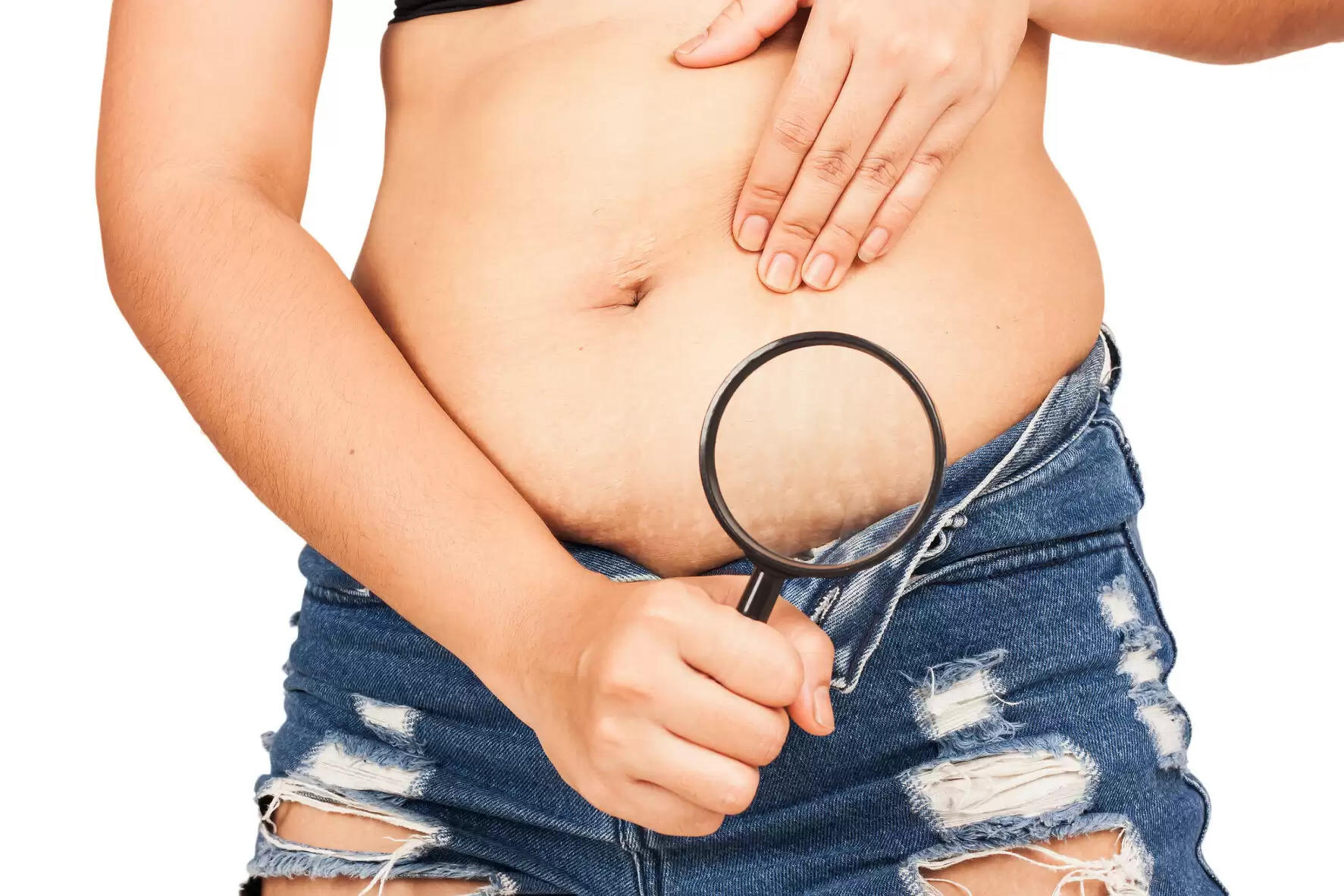Stretch Marks: What They Are, Why They Appear And How To Get Rid Of Them

Imagine standing in front of the mirror, ready to start your day, when suddenly your eyes catch sight of something unexpected. Streaks and lines, like delicate brushstrokes, adorn your skin in places you never noticed before. Your heart skips a beat as you realise these are stretch marks, also known as striae. These unique patterns that can occur on various parts of the body, such as the abdomen, thighs, breasts, and arms that can affect people of all ages and genders. These visible lines can often be a source of self-consciousness and insecurity for many individuals.
Understanding Stretch Marks
Stretch marks are a common skin condition that are caused by the rapid stretching of the skin. These marks can develop during puberty, pregnancy, weight gain or loss, and bodybuilding. Stretch marks typically appear as pink, red, or purple streaks on the skin, and they may fade to a lighter colour over time.
Stretch marks occur on various body parts when the skin stretches or shrinks rapidly due to certain physiological changes. The middle layer of the skin known as dermis, undergoes a series of structural alterations during this process. The collagen and elastin fibres in the dermis ruptures due to the abrupt stretching, resulting in the formation of visible marks on the skin's surface.
Causes of Stretch Marks
- Puberty induced growth spurts: Adolescents experience rapid growth spurts during puberty that can lead to the development of stretch marks on various body parts. The sudden stretching of the skin during this time period causes collagen and elastin fibres to tear, resulting in stretch marks.
- Pregnancy: It is one of the most common causes of stretch marks. The abdomen expands rapidly as the baby grows, causing the skin to stretch beyond its limits. Hormonal changes that happen during pregnancy also contribute to the development of stretch marks.
- Weight fluctuations: Stretch marks also develop due to the significant weight gain or loss by putting stress on the skin. In cases of obesity or sudden weight loss, the skin may not have enough time to adapt, resulting in stretch marks.
- Corticosteroid use: Excessive use of corticosteroid medications for prolonged time can weaken the skin's collagen fibres, making it more prone to developing stretch marks.
- Genetics: Some individuals are genetically more prone to developing stretch marks due to their skin's inherent characteristics. You have a higher chance to develop stretch marks if someone from your family has a history of this skin condition.
Treatment
It may not be possible to completely get rid of stretch marks, however there are several treatments and lifestyle changes that can help minimise their appearance and improve the overall condition of the skin. Here are some effective strategies:
- Topical treatments: There are various creams, oils, and lotions available that claim to reduce the appearance of stretch marks. Products containing ingredients such as retinoids, hyaluronic acid, vitamin C, and collagen-boosting peptides can be helpful, as they can help improve the elasticity and texture of the skin.
- Laser therapy: Various laser treatments, such as fractional laser therapy and pulsed dye laser therapy, have shown promising results in reducing the appearance of stretch marks. These procedures work by stimulating collagen production and promoting the growth of healthier skin cells.
- Microneedling: Microneedling which involves creating microscopic injuries on the skin's surface using tiny needles has been effective in treating stretch marks. It triggers the body's natural healing response, promoting collagen synthesis and improving the appearance of stretch marks over time.
- Chemical peels: Chemical peels exfoliate the outer layer and stimulate collagen production by the application of a chemical solution to the skin. This procedure can help fade stretch marks and improve overall skin texture.
- Maintaining a healthy lifestyle: A balanced diet which is rich in vitamins, minerals, and antioxidants supports skin health and elasticity. Staying hydrated, exercising regularly, and avoiding excessive sun exposure can also contribute to healthier-looking skin.
Conclusion
Stretch marks can be unsightly and a source of frustration, but they are a natural part of the body's response to changes. While it may not be possible to eliminate stretch marks completely, the various treatments and lifestyle changes can help minimise their appearance and improve overall skin health. Remember, your stretch marks tell a unique story of growth and change, and they are a testament to the strength and resilience of your body. Let go of the insecurities and celebrate the beauty that lies within you.
Disclaimer: The above content is for informational purposes only and should not be used as a substitute for the advice of a qualified physician or doctor. The Company does not vouch for or endorse any of the above content, and disclaims any and all warranties, express or implied, relating to the same..png)